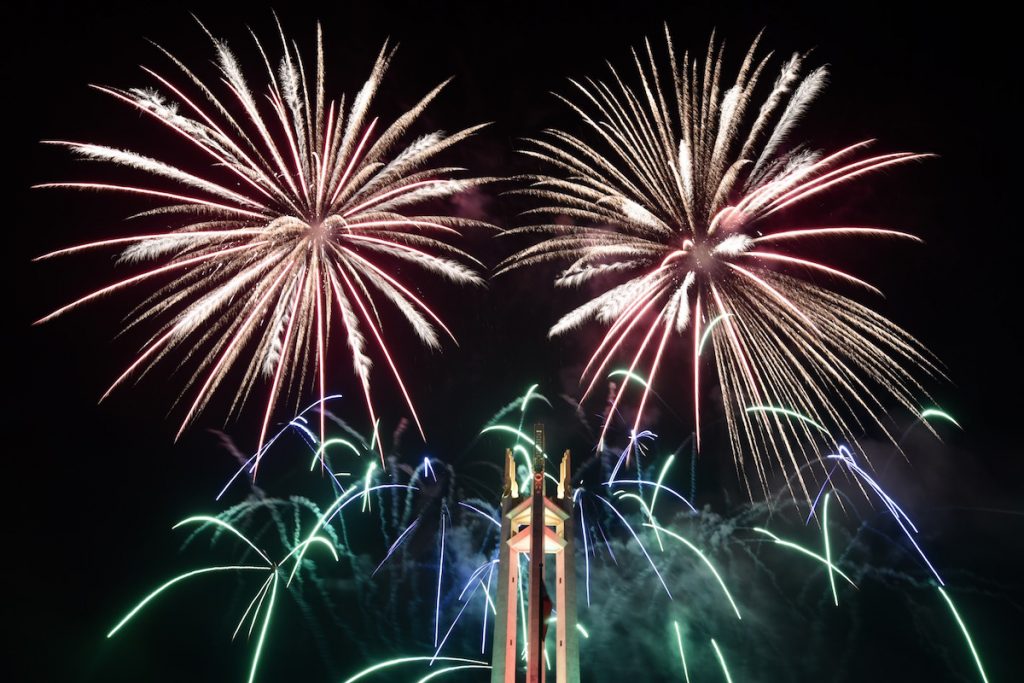A survey conducted at the end of 2019 revealed that despite difficulties they have encountered Filipinos continue to remain hopeful about the future.
Results of a survey done by independent pollster Social Weather Stations showed that 96 percent of respondents are “entering 2020 with hopes rather than with fears.”
“Hope gives me the energy to move on and pursue my dreams for my community,” said Lodema dela Cruz Doroteo, a teacher, when asked about the survey results.
Doroteo belongs to the Dumagat tribe in Tanay town, north of Manila. She is the first to finish college from her poor community.
When she finished her education in 2016, she went back to her tribe and established a school for tribal children.
“We started with nothing,” she said, adding that she used charcoal, stones, and bamboo as writing materials.
She used the power of social media to gather support for the community school. People from the city responded and provided help.
Fear, however, recently enveloped Doroteo’s village when an armed clash erupted between government security forces and communist guerrillas.
When the military operations began, teachers and pupils were prevented from going to school. People were also prohibited to enter the forest.
Doroteo set aside fear and clung to her belief that “only education will give my people the courage to speak out for their rights.”
She continues to open the school despite the threats. She recounted an incident when soldiers accused the teachers of teaching the children how to use guns.

Rebuilding hope to battle fear
In the southern Philippines, an activist group said “hope and space” for tribal education are “diminishing” because of continuous attacks on tribal schools and communities.
“Fear is all over the place,” said Rius Valle, spokesman of the group Save Our Schools Network.
He said at least 156 schools for tribal children that have been “forcibly closed” by the government and the military since 2016. “The remaining 59 schools are also under threat,” he said.
The Philippine military claimed that the tribal schools were being run by the guerrillas.
Irene Bay-ao, a 13-year-old Manobo tribal girl from Talaingod town in Davao del Norte province, has been in the capital Manila with 72 other tribal children for a year now.
“We came here to tell about our situation in Mindanao,” the girl said. “What’s happening to us and to our schools will not stop if the public will not be made aware and act about it,” she added.
The children have been staying in “sanctuaries” provided by various educational and religious institutions.
Lawyer Rachelle Isip visited the children in a university campus, which hosted a Bakwit school (displaced school), during Christmas.
She brought food and gifts, but she said the most important thing was “to listen to the stories of these children who only want to pursue their education.”
“I am glad that I was able to talk to them so that I can retell their stories to others,” said Isip. “The public has to know that there are Filipinos who suffer and need our help,” she said.
Father Teodulo Holgado, convener of a network of advocates for tribal peoples’ rights, said the public can help in offering hope to those who are “in a constant state of fear.”
“A simple visit can boost the spirit and give hope,” said the Redemptorist priest. “It also helps us to really understand their condition and the reasons behind that condition,” he said.
Father Holgado’s group started a “mass integration program,” which encourages professionals, students, and church workers to understand the plight of displaced people.
“This is always about sharing hope and overcoming fear through our collective response to this kind of injustice,” he said.
Entering new decade with hope
Survey results said that hope for a favorable new year matched the record high of 96 percent in 2017 when respondents were asked, “Is it with hopes or with fears that you enter the coming year?”
The Social Weather Stations survey found that hopefulness for 2020 rose in all areas except for the southern Philippine region of Mindanao, President Rodrigo Duterte’s home region.
The survey results also showed that less Filipinos — 33 percent made New Year’s resolutions for 2020, compared to 46 percent in 2017, the only other time respondents were asked if they made resolutions for the coming year.
The survey was done through face-to-face interviews with 1,200 adults, 18 years old and above: 300 each in Metro Manila, Balance Luzon, Visayas and Mindanao.
The nationwide survey has a sampling error of ±3 percent for national figures and ±6 percent for the areas.
During the survey period, among the dominant issues were the Philippines’ hosting of the 30th Southeast Asian Games, and the report that the U.S. Senate foreign relations committee approve a resolution barring the entry of Philippine officials responsible for extrajudicial killings in the country.
The presidential palace attributed Filipinos’ hopefulness for the coming year to the government “difficult but game-changing reforms.”








